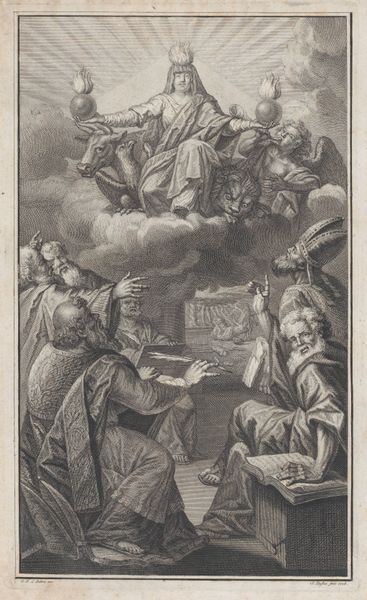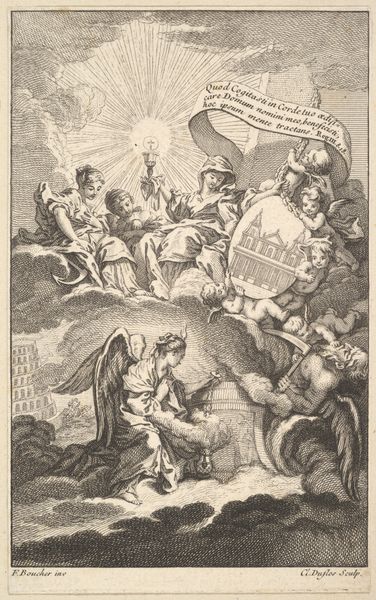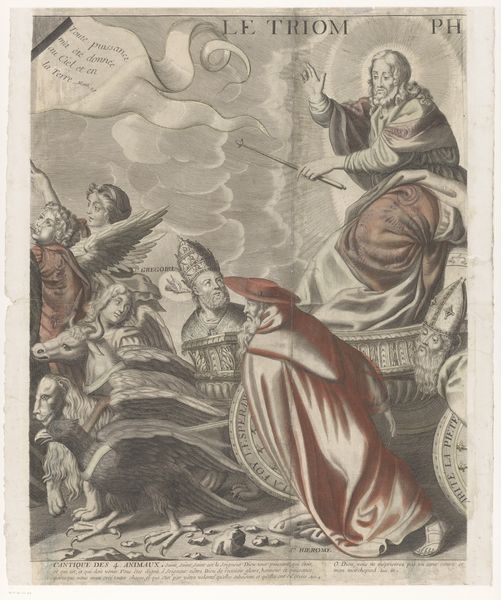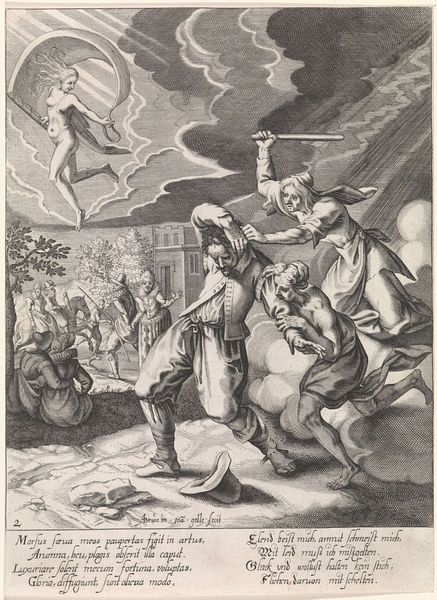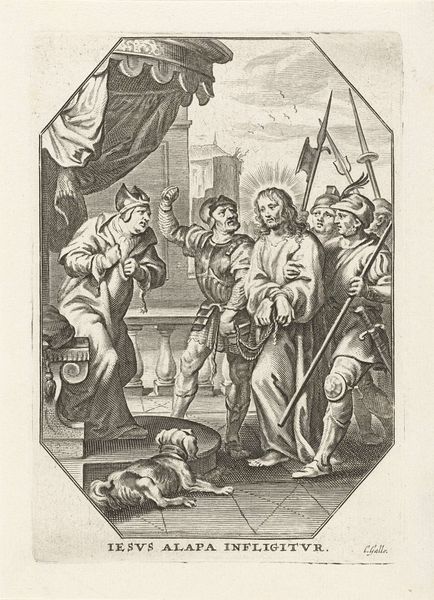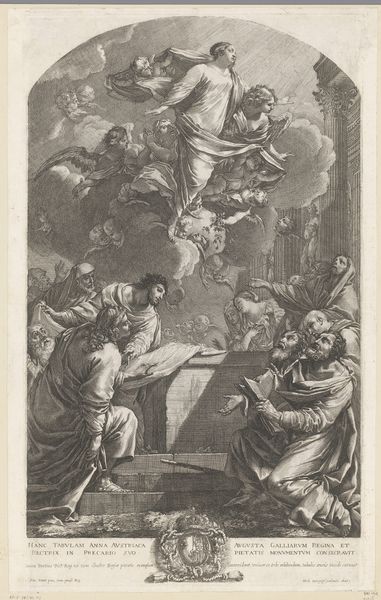
Maria als Onze Lieve Vrouwe ter Hulpe en de verlossing van de gevangenen 1632 - 1633
0:00
0:00
print, engraving
#
portrait
#
allegory
#
baroque
# print
#
old engraving style
#
history-painting
#
engraving
Dimensions: height 304 mm, width 218 mm
Copyright: Rijks Museum: Open Domain
Editor: Here we have a 17th-century engraving by Theodoor van Thulden titled "Maria als Onze Lieve Vrouwe ter Hulpe en de verlossing van de gevangenen," or "Mary as Our Lady of Rescue and the redemption of prisoners". It’s a pretty powerful image; the contrast between the darkness of the imprisoned figures and the radiant Virgin Mary really hits you. What do you see when you look at this print? Curator: It strikes me as a complex tapestry woven with threads of hope and the heavy weight of captivity, wouldn’t you say? The piece hums with a baroque energy; the figures reaching, straining, pleading. It’s almost theatrical. There’s a profound humanity in those desperate faces, wouldn’t you agree? But consider, for a moment, the artist's own struggles and how these manifest within the work's intricate details. The meticulous engraving technique—it almost feels like he’s etching away at despair itself. The text references redemption... How do *you* perceive the figures being redeemed here? Is it solely through faith, or do you see another story being told? Editor: I guess it could be more complicated... the presence of the monk suggests direct intervention, maybe a negotiation for freedom? Curator: Precisely! Van Thulden captures the spirit of the Order, active in the real-world ransoming of captives. I like to think that as van Thulden worked on the ship in the background, he allowed himself a bit of a day-dream and placed himself on that vessel... Editor: So, it’s not just about religious redemption, it's also about concrete action in the world. I hadn't thought of it that way. Thanks! Curator: It's a beautiful testament to both faith *and* good works. Makes you wonder, doesn't it, where we find our own sources of redemption today?
Comments
No comments
Be the first to comment and join the conversation on the ultimate creative platform.

